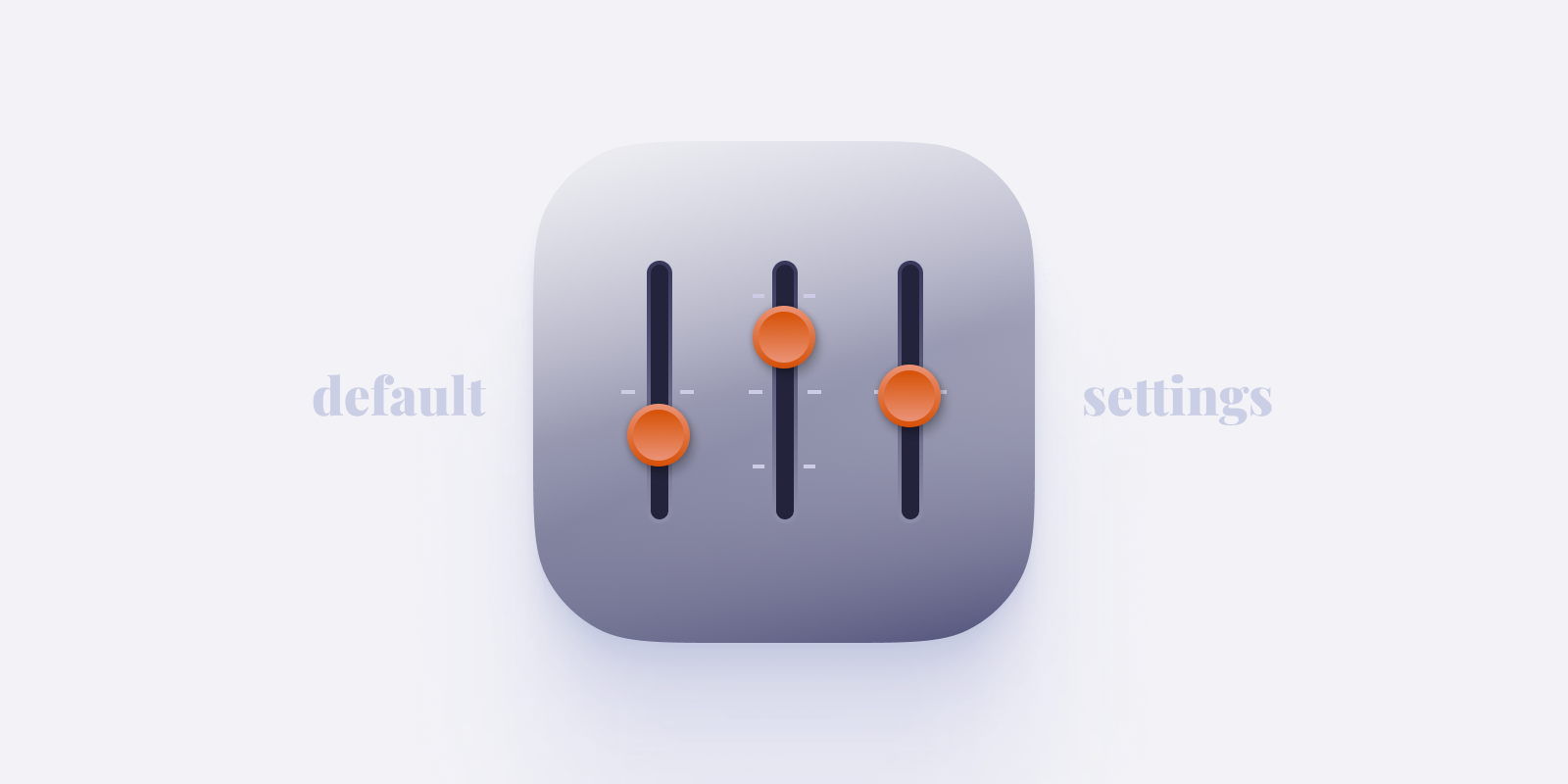Why Default Settings Matter More Than You Think
People stick to defaults when that feels easier than changing them. That's why it's so important to nail your product's defaults. You get there by getting a deep understanding of your user's struggles. It's not easy, but it's incredibly gratifying for you and them.
People don’t change their default settings

Whatever ships with your products that’s what most users will use.
A while back, Jared Spool asked a bunch of people for their Microsoft Word settings file and found out that:
Less than 5% of the users we surveyed had changed any settings at all. More than 95% had kept the settings in the exact configuration that the program installed in. — Do users change their settings?
And this isn’t an isolated case.
In an article for The Guardian, Charles Arthur describes how providing pre-set percentages for tips in cabs in NY boosted the overall tipping amount:
You could also input a tip, touching the onscreen buttons. Or there were three quick options, for 20%, 25% or 30%. No surprise! Most people didn’t bother to type in a tip; they just hit the 20% or 25% button. The average tip leapt from 10% to 22% — Charles Arthur, The Guardian.
Most people don’t bother
I’m one of those weirdos who loves to observe and even ask people about how they use their phones and computers.
The vast majority of iPhone users use Safari. Their email app is Apple Mail, and their calendar app is Apple’s Calendar.
This is different for tech-enthusiastic people like designers and engineers, though. And these people make the software the rest of the world depends on.
I’m a designer. I use Brave instead of Safari, Gmail instead of Mail, and a combination of Cron, Calendly, and Google Calendar for calendar stuff.
The point is, it is a mistake to think that because tech folks like to customize their settings, everyone else on earth also does.
But why isn’t it common for people to change their default settings?
Changing the defaults takes effort
Customization means making decisions, and decisions take effort.
There usually is an inverse correlation between the effort a task needs and how enjoyable an experience is.
I say usually because, in some cases, pursuing meaningful goals makes some of the effort feel worth it.
But for the vast majority of tasks, high effort sucks.
So, if the defaults are good enough, people will stick to them.
People change the defaults if the effort required to change them feels less than the annoyance of sticking with them.
They want you to know without having to tell you
Users don’t necessarily need customizability.
Instead, they want your product to fit their needs out of the box. No hiccups, no digging around settings, no manuals.
Knowing what people want without them having to go into settings to “tell you” is hard.
But if you nail it, your product feels like magic.
To achieve that genuinely seamless experience, you need to get your default settings just right.
Striving for smart defaults
Unless you’re an actual user of the product you’re making, you will need to invest a lot of time into studying and learning from your users.
I won’t preach to the choir and tell you research is good. That’s obvious.
Nailing defaults requires more than just research.
Do their work
I’m still working on this, but few things will teach you more about smart defaults than using the product to do what your users do.
Is your app for…?
- GPS navigation? Get in the car and drive
- Transferring money? Send money yourself
- Learning language? Pick a language and get good at it
- Working out? Hit the gym
- Searching for flight tickets? Book a holiday
- Ordering food? Buy yourself some dinner
- Edit pictures? Take a bunch of pictures and edit them
- Write code? Build something and push it live
- Taking notes? Use that instead of whatever else you’re using
Study patterns and heuristics
It’s not about getting good at using whatever design tool you use.
That’s a given.
Broaden your pattern vocabulary by observing how different apps solve different problems.
Most modern apps take advantage of the same 20 or so patterns.
A solid foundation of design heuristics and mental shortcuts is also a good idea. It will give you a better understanding of how and why some patterns work and speed up your decision-making.
Staying on top of standard practices in the industry is critical for a product designer to produce work that aligns with what your users expect.
It also allows you to break conventions when necessary.
Conclusion
People stick to defaults when that feels easier than changing them.
That’s why it’s so important to nail your product’s defaults. You get there by getting a deep understanding of your user’s struggles. It’s not easy, but it’s incredibly gratifying for you and them.